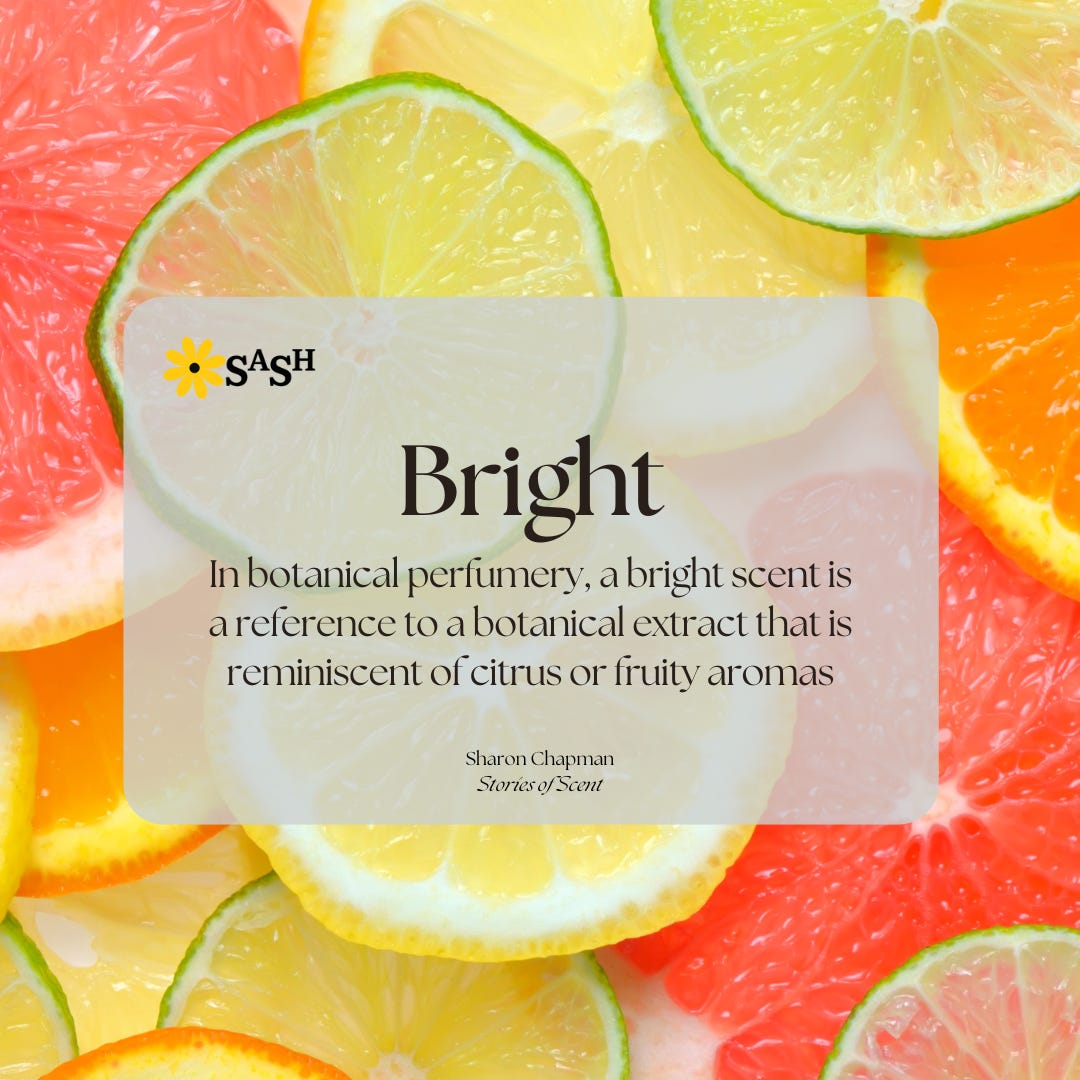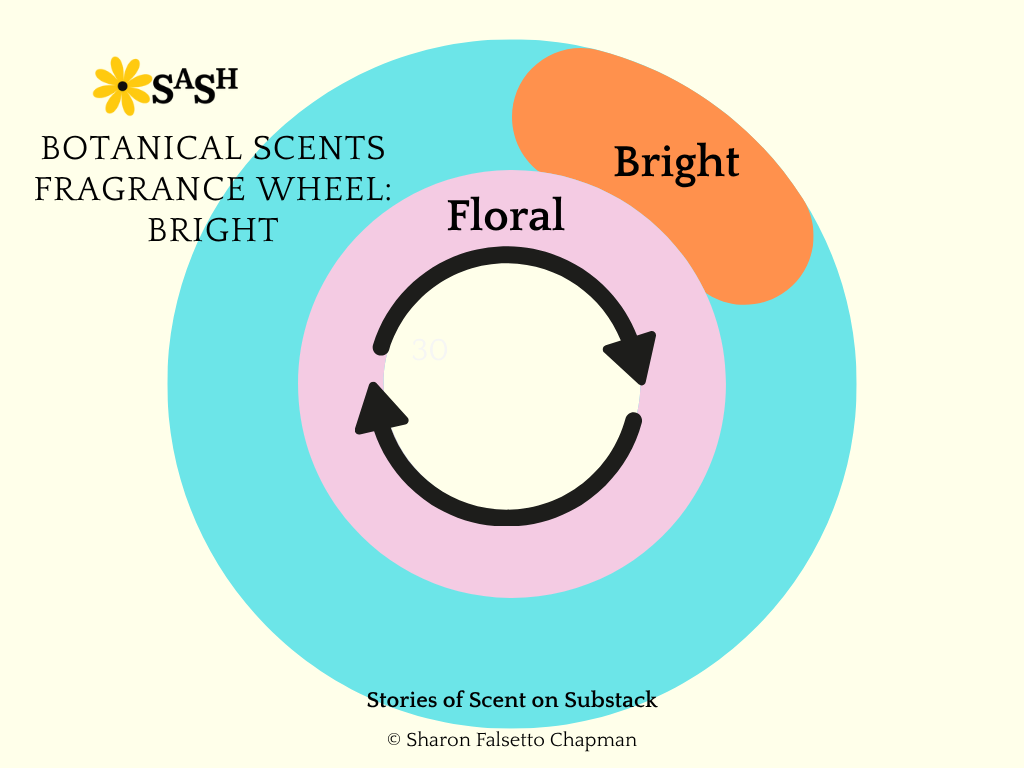Last week, I introduced you to the first part of my Botanical Scents Fragrance Wheel:
The aim of this project is to reimagine the traditional fragrance wheel used by perfumers and make one that is suited specifically to botanical scents - used by botanical perfumers and aromatherapists.
Over the years that I have been studying botanical perfumery, I have come up with some of my own interpretations/understandings based on the traditional fragrance families/wheel, which - to me - fit more easily with botanical perfumery.
As I started to think about this project, I realized that my Botanical Scents Fragrance Wheel was going to divert from the traditional fragrance wheel by one major component. It would have a “central” wheel: Floral. The reason I came up with this was personal. The majority of my fragrances have a floral element.
Building on this central floral wheel, I am going to add five more different categories - based on the traditional fragrance wheel but renamed to reflect both botanical and personal reasons. The first spoke of this wheel is BRIGHT.
What is Bright in Perfumery?
My interpretation of bright in botanical perfumery for this project is an extract (essential oil, CO2, absolute or other type of botanical extract) which is reminiscent of citrus or fruit. They are the elements that add sparkle or brightness to your creations - both in color (which is an important part of botanical perfumery) and aroma. Some examples include:
lemon (Citrus limon)
orange (Citrus spp.)
lime (Citrus aurantifolia)
mandarin (Citrus reticulata)
berry (think raspberry (Rubus idaeus) , strawberry (Fragaria × ananassa), and blackcurrant bud (Ribes nigrum) (although not as fruity as it sounds in reality).
You can tincture some of these extracts, in addition to using them as a CO2, essential oil, and/or absolute. Examples of my fragrances which have a bright element include Audrey on Air and Avid About Ava.
Some other extracts also have a citrus aroma to them which could be incorporated into an overall fragrance. These include:
melissa (Melissa officinalis)
lemongrass (Cymbopogon citratus)
pine (Pinus spp.).
However, I am not including them in the BRIGHT spoke, as we are trying to keep it simple. But it is something to bear in mind as you compose a fragrance with a bright element.
So, we now have both the central floral “wheel” and the bright spoke. This looks something like this:
By the end of the journey, we will have put together a botanical scents fragrance wheel that you can exclusively use with botanical perfumery. However, remember that this is simply my own interpretation and there is no one size fits all.
BONUS: I will also be including a separate bonus wheel for paid subscribers!
Learning botanical scents and organizing them into some sort of reference tool is extremely useful as a perfumer.
Perfume formulation can be a puzzle - but it doesn’t have to be! By subscribing to and reading my short FREE articles each week, you’ll get nugget-sized pieces of information to build your scent tools. Upgrade to paid to take that learning deeper, and get examples of actual oils, absolutes, and extracts to build into your botanical scents fragrance wheel (in the coming months).
Please drop a heart below if you like this article, forward it to a friend, or invite someone to subscribe (and perhaps get a free month’s paid subscription for doing so!).
What did you learn from this article? Drop me your thoughts in the comments below.
““You can’t keep a star from shining and my star’s going to shine bright.”
Aljamain Sterling, American mixed martial artist







